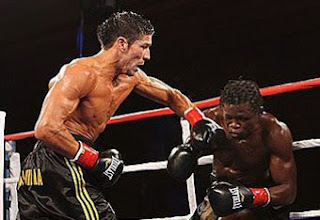How do I get six-pack or washboard abs? Hmm.. the question I am most often asked.
The first thing you need to understand is this: we ALL have six-packs! Six-packs aren't 'created' by doing ab exercises...they already exist.
The reason most of us can't see our abs is because they're covered by a layer of fat. What this means is that:
Doing ab exercises to achieve a six-pack is an impossible goal
The only way to see your six-pack is to reduce your body fat
The best way to reduce your body fat is with high intensity strength training and a healthy, low-calorie diet. Notice I didn't say cardio, doing cardio has it's place, however if you want to shed fat to see those abs....you need to do high intensity work.
This doesn't mean that ab exercises serve no purpose--strong abs support your spine and protect your back. However, keep in mind that your ab workout is just one part of a complete program when it comes to getting a six-pack.
Normally when writing a post, I use a picture that best fits the story, usually a fitness model or a pro athlete. I take care in giving you visual inspiration along with solid information you can trust to be true. Today I will use myself, the reason is simple. The topic you the readers seem to be most interested in is abdominal training and how to get the coveted " Six Pack ". So at forty two years of age, I can tell you that I was able to take the guess work out of ab training and learn really what it took to sculpt some eye catching abs. No I am not going to sell you anything or refer you to some infomercial. What I am going to do is tell you exactly what it takes and how to do it and all for free.
In doing so I am using a picture of myself to demonstrate that you do not need to be a pro athlete or a fitness cover model to have a great mid section. I like most of you have a full time job and a family. Like most of you, at one time I was misled in believing you needed sit ups or fancy machines and tons of cardio to build a defined and trim six pack. Commercialism is so very responsible for misleading the American public, it's no wonder so many of you are just plain confused. So here goes.
If you're not a child with the metabolism of a jet rocket, better leave the basic sit up back in the gym class. It is not very effective in sculpting your mid-section. What is effective as I have already touched on is high intensity training, using weights. The key is whole body training and the basic multi-joint exercises like the squat, dead lift, pressing movements, pull-ups, yes pull-ups and then some finishing exercises like weighted floor barbell roll outs and rope crunches. These exercises done correctly and quickly with resistance will force your body to recruit many fast twitch muscle fibers. Doing this demands more energy so first stored calories then fat are quickly used for this. The best news, when you finish training in this manner your body continues to burn calories for many hours after the work is done. Unlike cardio. With cardio, the minute you step off the treadmill, your calorie burning grinds to an immediate halt.
The abdominal respond best as do any other muscle group, with intensity!! Weighted exercise create the intensity needed to cause the stress required for the building of lean muscle tissue and burning tons of unwanted fat. Listen, your abs come into play in just about every thing you do throughout the day as well as about every exercise you do in the gym. The abs must stabilize your spine and are constantly being used. Do you think some crunches on a exercise ball are going to sculpt your mid-section and burn fat? I think not, in fact your abs are laughing at the notion.
No, none of this is easy and it does require some skill and education. Be persistent and take this information to heart. The TV ads that promote fast abs wouldn't sell any product if they told you the above mentioned is what it really takes. So don't be fooled, save your money. If you need help, I will give it to you for free. It's all here on my site. H.I.G.T is the future of fitness training. Stay focused and good luck. Now go live the shredded life.
Richard







